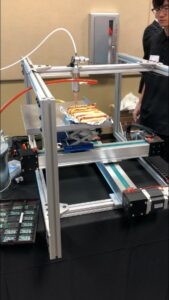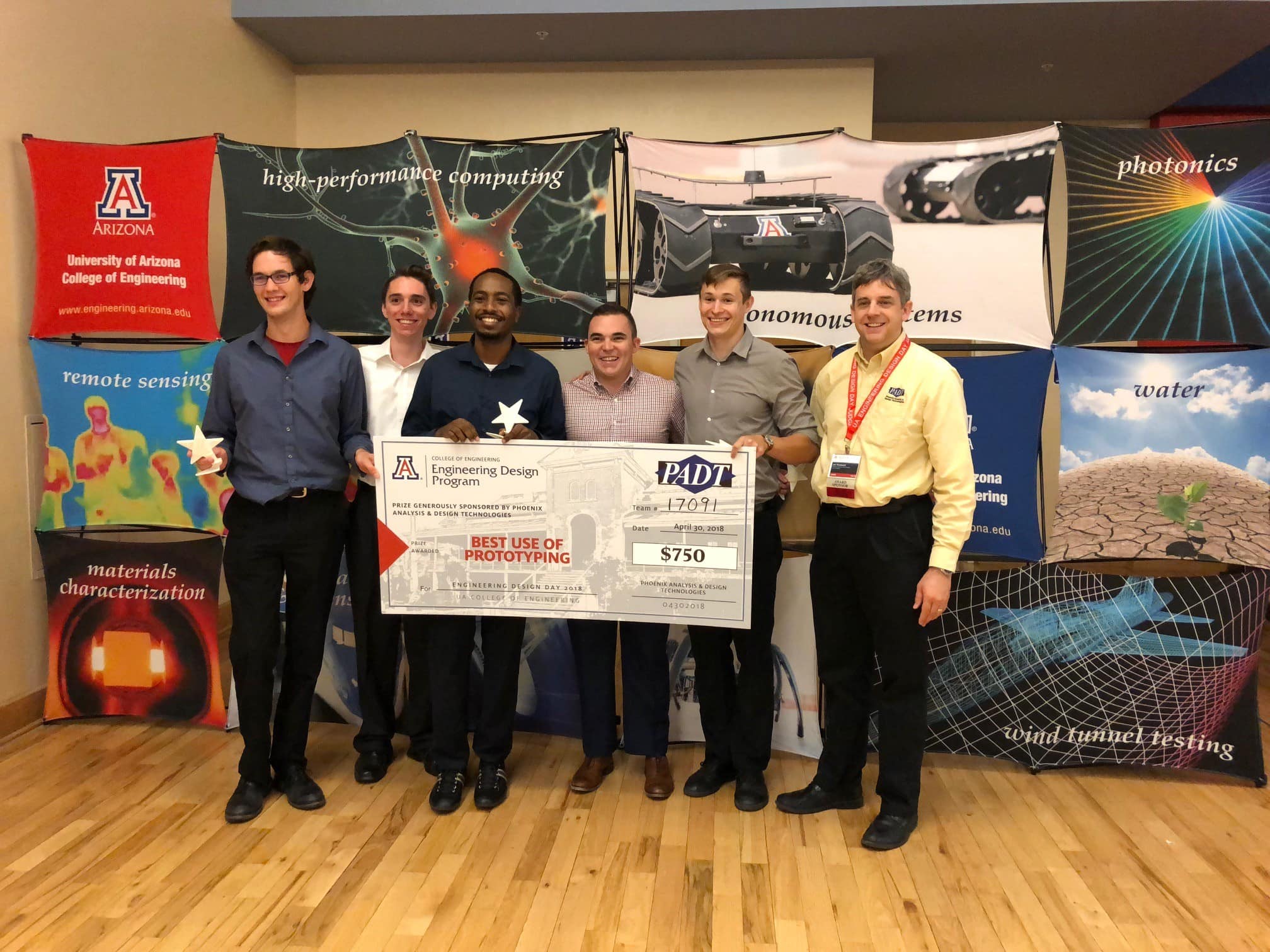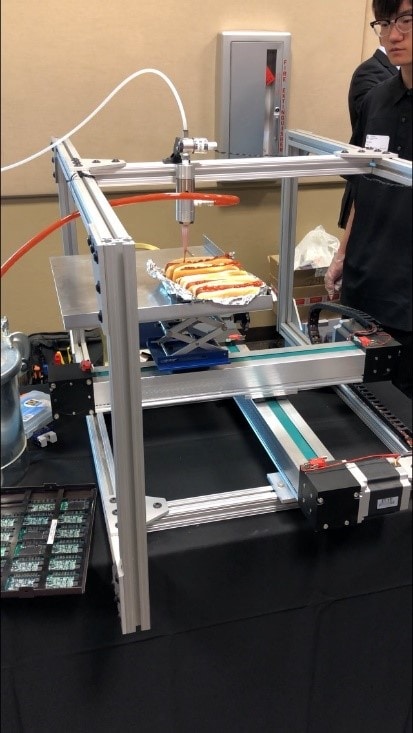Last week I had the distinct privilege to head down to the University of Arizona and help judge projects for the 2018 Engineering Design Day. It is always fun to see all the different, multidisciplinary projects that combine teams from the mechanical, electrical, biomedical, optical, chemical, mining, and environmental departments. Projects range from a new Secure Wireless Protocol, to autonomous UAVs, to medical devices of all types, to automated manufacturing process equipment used to cover electronics with epoxy. That last team had the forethought to demonstrate the equipment by programming it to put ketchup on hot dogs to give to the hungry judges. Good job, team!

In the morning, groups of judges visit 5 design teams and score their presentations and projects on a number of criteria. They also decide if any of those teams should be nominated for any of the 27 cash awards given out this year. In the afternoon, the same groups of judges go around to each of the nominated groups for a specific award and judge the project based on the criteria for that award. PADT sponsors the Phoenix Analysis & Design Technologies Award for Best Use of Prototyping, which this year, went to the Noncontact Detection of Bioelectric Fields project team. This innovative product is able to detect and monitora human heartbeat from a distance without the usual EKG wires and probes.
This was my sixth year judging, and I am always impressed with the amount of work and skill that the students put into their projects. I am also surprised each year by seemingly on-going confusion over what constitutes a physical prototype, not only from students but from the industry judges. Among ten other nominations was the Laser-Guided Ankle Positioning for Total Ankle Arthroplasty team, which won the Raytheon Award for Best Overall Design. These two teams, the winner and the runner up, stood out from the rest because in their presentations they used one small phrase for which I am always listening; “We made this to see if…”, or “to try out …”, or “to find out…” They made a prototype specifically to learn from it.

Since PADT is the southwest leader in 3D printing and rapid prototyping technologies, many of the nominations are made because the team had a large amount, or good use of, 3D printing in their final design. The teams may even have jumped directly to 3D printing as a first pass, but many times much less expensive material could have been used. (i.e. don’t 3D print a $35 tubular housing when a $2 piece of PVC will fit the bill.) Most of the other teams get nominated for the Best Use of Prototyping Award because they had many iterations of their design. “Our first one broke, so we added a support here on the next one,” is a very common phrase heard in the presentations. In my opinion, that constitutes a lack of foresight, planning, and analysis, but not a good use of a prototype.
The best prototype is one that is not only inexpensive but made to gather specific information or to be configured quickly to try out different scenarios. The winning team this year used a breadboard circuit first to layout all their electronics. They then converted to a pin-board to quickly make sure that they could isolate their components from the sensor signals when everything was packed in tighter, before following through with the final PCB design. (See guys, I was listening.) The ankle positioning team printed several individual pieces of the system to then have an orthopedic surgeon try out the different configurations to see what worked best and get his input on any missing features needed for the final design. Last year’s winners of this award made an esophageal guidance system so doctors would know if they were in the esophagus or the trachea. Their final product was an incredibly small sensor, but the first thing they did was use two beakers and a salt-bridge to see if they could tell the acidity level accurately enough to distinguish the two environments. They then made a full prototype of the proposed sensor array that was about 50 times larger than the final product. It was much easier to build and test, and modify, the larger prototype than the miniaturized final sensor array. These are all good examples of using physical prototypes.
I was glad to see that we had only eleven nominees this year, down from 21 last year. I look forward to seeing if the trend continues next year as the judges listen for the phrases above. Of course, I meant to write this article last year when I came back from Design Day, and the year before that, but I’ll talk about procrastination in my next article. …when I get around to get it.



















